1. Tell Her You’re a Man With Mennen
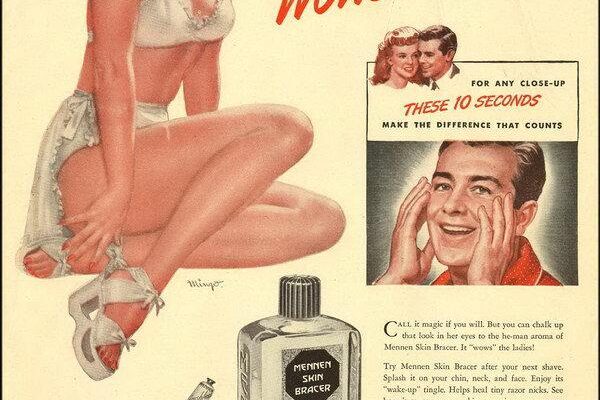
In the 1950s, Mennen aftershave wasn’t just about smelling fresh, it was marketed as bottled masculinity. The ads promised that a quick splash could make a man more confident, more desirable, and even more respected. They often showed rugged, smiling men winning over women simply by dabbing the product on their cheeks. The implication was clear: if you wanted to prove you were a “real man,” cologne alone could do the talking. This type of marketing played on insecurities about confidence and identity, reducing manhood to a scent choice.
2. Don’t Lose Your Job Over Dandruff
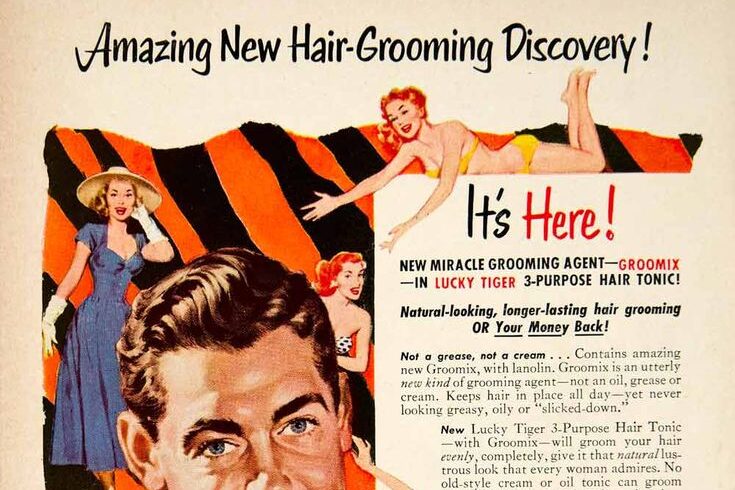
Shampoo ads in the ’50s didn’t just promote clean hair, they stoked fear. Some brands warned that visible dandruff could cost a man his career, with the message that flakes meant carelessness, and carelessness meant unemployment. It turned grooming into a professional survival skill, linking hair health to workplace respect and success. While today’s dandruff treatments focus on comfort and confidence, back then, the stakes were exaggerated for maximum impact.
3. Brylcreem Means Success
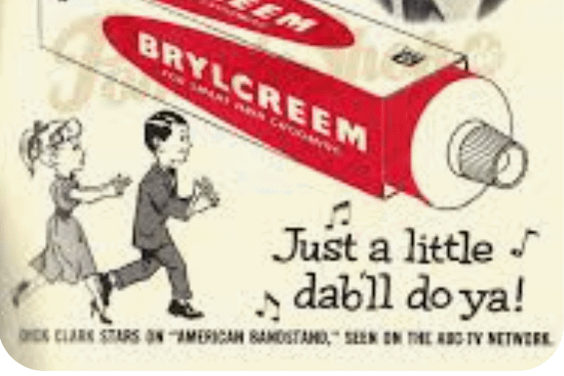
Brylcreem ads presented slick, shiny hair as the ticket to career advancement. One memorable slogan claimed, “Just a little dab’ll do ya,” implying that well-groomed hair created instant connections and respect in the corporate world. Men were shown in crisp suits, closing business deals with a glossy wave in place. The subtext was unmistakable: neglect your hair, and you risk looking unprofessional or untrustworthy. For many, the daily ritual of applying Brylcreem became as essential as tying a tie.
4. Men’s Girdles for Shape
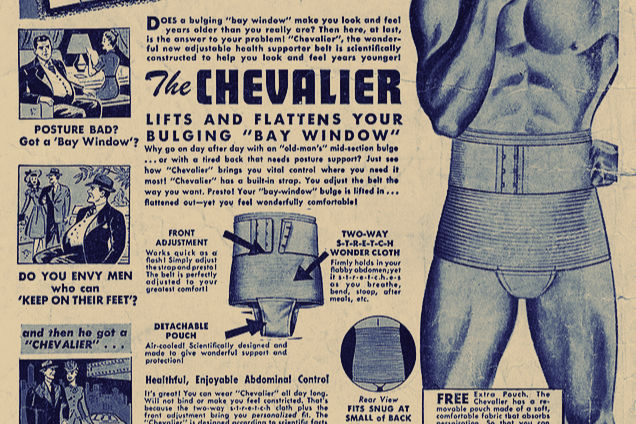
While men’s corsets and reducing belts might sound surprising today, in the 1950s they were marketed as discreet tools for maintaining a “strong” appearance. Ads promised these undergarments could instantly trim inches off the waist, making a suit fit better and a man look more “in control.” The pitch often appealed to pride, suggesting that letting the midsection go was a sign of losing vigor. The products were framed as practical, even dignified, for the modern man who cared about his image.
5. She’ll Notice If You Don’t Smell Right
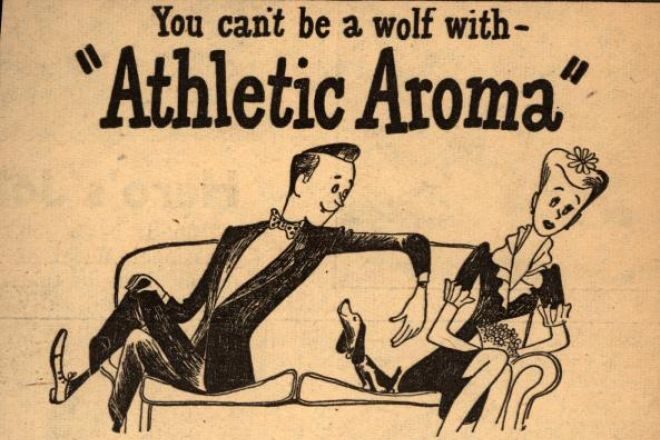
Deodorant ads in the ’50s didn’t simply address body odor, they framed it as a relationship deal-breaker. Campaigns warned men that a single whiff of sweat could lead to romantic rejection, marital trouble, or public embarrassment. Images often showed concerned wives or dates turning away from a man with a hint of suspicion. These ads played on the fear that hygiene wasn’t just about health, it was a measure of respect, attraction, and even love. Smelling “right” was presented as a non-negotiable.
6. You’re Not Fully Dressed Without a Hat
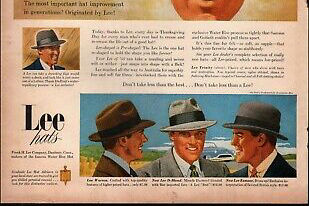
In the 1950s, hat ads positioned headwear as the final mark of respectability. A man stepping outside without one was seen as incomplete, almost improper. Campaigns featured businessmen tipping their fedoras to women, striding confidently to work, their hats perfectly tilted, or featuring men on hats conversing together. The message was simple: no matter how sharp your suit, you weren’t “dressed” until your hat was on. This social expectation was so strong that hat racks were common in workplaces, restaurants, and even public buildings.
7. Real Men Smoke Camels

Cigarette ads often tied smoking to ruggedness, power, and charm. Camel’s campaigns claimed that “real men” chose their brand, showing soldiers, athletes, and adventurers lighting up with a knowing smile. The implication was that toughness wasn’t just about muscle, it came with a lit cigarette in hand. The imagery reinforced the idea that smoking was not only normal but a mark of maturity, authority, and even desirability. It was lifestyle marketing at its most persuasive, long before health warnings took center stage.
8. Don’t Let Your Hairline Undermine Your Authority
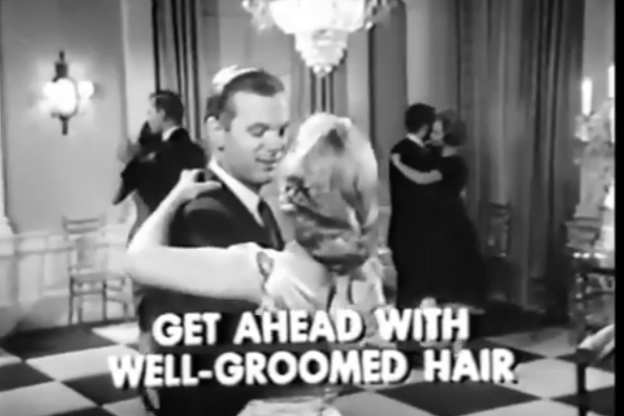
Balding was painted as a professional and social liability in 1950s hair tonic ads. Campaigns warned men that thinning hair could make them look older, weaker, or less commanding. They offered “miracle” tonics, sprays, and scalp massages that promised fuller hair, and by extension, more respect. In some ads, a boss with a full head of hair was contrasted against a nervous, balding employee, driving home the message that appearance could make or break leadership potential.
9. Shave Every Day to Prove Responsibility

Shaving wasn’t just grooming, it was pitched as proof of discipline and reliability. Ads showed clean-shaven men smiling confidently at their bosses or wives, with the suggestion that stubble signaled laziness. Some brands even hinted that a man who skipped a day of shaving might be seen as careless in other areas of life. Razors and creams were sold as tools for maintaining not just a look, but a reputation. Daily shaving became an unwritten rule of manhood.
10. He Drives a Cadillac Because He Earned It
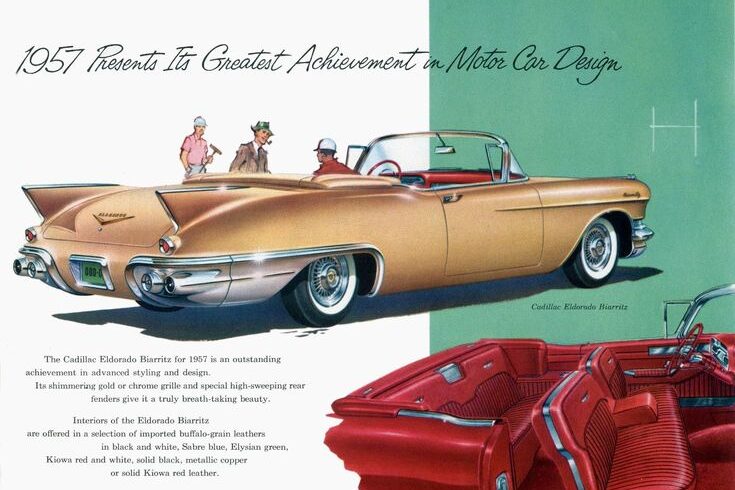
Car ads in the ’50s were rarely about horsepower or fuel economy, they were about status. Cadillac in particular framed ownership as the ultimate reward for success. Commercials showed prosperous men stepping out of gleaming vehicles in tailored suits, their achievements reflected in the polished chrome. The car itself became a symbol of power, refinement, and social standing, suggesting that driving one wasn’t just a choice, it was proof you had “made it.”
This story 10 Ridiculous Male Advice Ads from the 1950s was first published on Daily FETCH


